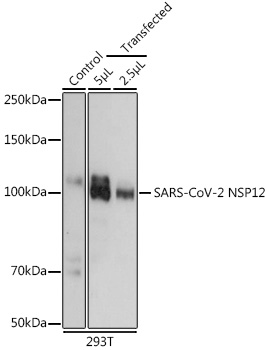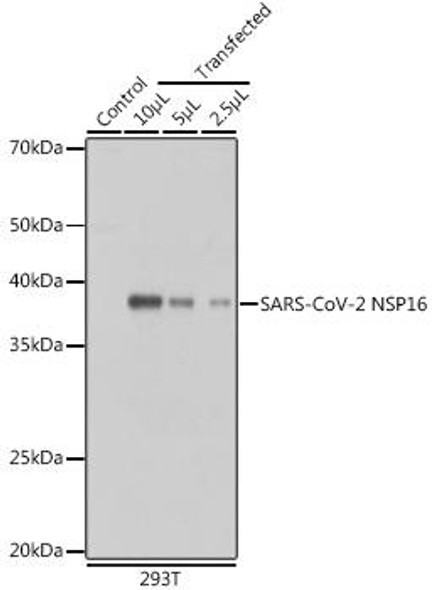SARS-CoV-2 NSP12 Rabbit Polyclonal Antibody (CAB20233)
- SKU:
- CAB20233
- Product Type:
- Antibody
- Antibody Type:
- Polyclonal Antibody
- Reactivity:
- Virus
- Host Species:
- Rabbit
- Isotype:
- IgG
Description
SARS-CoV-2 NSP12 Rabbit Polyclonal Antibody (CAB20233)
The Anti-SARS-CoV-2 NSP12 Antibody (CAB20233) is a valuable tool for researchers studying the novel coronavirus and its mechanisms of infection. This polyclonal antibody, raised in rabbits, is highly specific to the NSP12 protein of SARS-CoV-2, which is essential for viral replication. This antibody is validated for use in various applications, including Western blot, immunofluorescence, and immunohistochemistry. Its high reactivity with human samples makes it an ideal choice for detecting and studying SARS-CoV-2 in infected cells and tissues.
The NSP12 protein is a key target for antiviral drug development, as it is involved in RNA synthesis during viral replication. By using this antibody, researchers can gain valuable insights into the molecular mechanisms of SARS-CoV-2 and potentially identify new therapeutic targets for combating COVID-19. Overall, the Anti-SARS-CoV-2 NSP12 Antibody is essential for advancing our understanding of this global health crisis and accelerating the development of effective treatments and vaccines.
| Product Name: | SARS-CoV-2 NSP12 Rabbit Polyclonal Antibody |
| SKU: | CAB20233 |
| Size: | 20uL, 100uL |
| Isotype: | IgG |
| Host Species: | Rabbit |
| Reactivity: | SARS-CoV-2 |
| Immunogen: | A synthetic peptide corresponding to a sequence within amino acids 200-300 of coronavirus NSP12 (YP_009725307.1). |
| Sequence: | YANS VFNI CQAV TANV NALL STDG NKIA DKYV RNLQ HRLY ECLY RNRD VDTD FVNE FYAY LRKH FSMM ILSD DAVV CFNS TYAS QGLV ASIK NFKS VLYY Q |
| Tested Applications: | WB ELISA |
| Recommended Dilution: | WB,1:2000 - 1:6000 |
| Positive Sample: | 293T |
| Calculated MW: | 794kDa |
| Observed MW: | 100kDa |
Severe acute respiratory syndrome coronavirus 2 (SARS-CoV-2) is an enveloped, positive-sense, single-stranded RNA virus that causes coronavirus disease 2019 (COVID-19). Virus particles include the RNA genetic material and structural proteins needed for invasion of host cells. Once inside the cell the infecting RNA is used to encode structural proteins that make up virus particles, nonstructural proteins that direct virus assembly, transcription, replication and host control and accessory proteins whose function has not been determined.~ ORF1ab, the largest gene, contains overlapping open reading frames that encode polyproteins PP1ab and PP1a. The polyproteins are cleaved to yield 16 nonstructural proteins, NSP1-16. Production of the longer (PP1ab) or shorter protein (PP1a) depends on a -1 ribosomal frameshifting event. The proteins, based on similarity to other coronaviruses, include the papain-like proteinase protein (NSP3), 3C-like proteinase (NSP5), RNA-dependent RNA polymerase (NSP12, RdRp), helicase (NSP13, HEL), endoRNAse (NSP15), 2'-O-Ribose-Methyltransferase (NSP16) and other nonstructural proteins. SARS-CoV-2 nonstructural proteins are responsible for viral transcription, replication, proteolytic processing, suppression of host immune responses and suppression of host gene expression. The RNA-dependent RNA polymerase is a target of antiviral therapies.
| Purification Method: | Affinity purification |
| Gene ID: | 43740578 |
| Storage Buffer: | Store at -20℃. Avoid freeze / thaw cycles.Buffer: PBS with 0.01% thimerosal,50% glycerol,pH7.3. |











